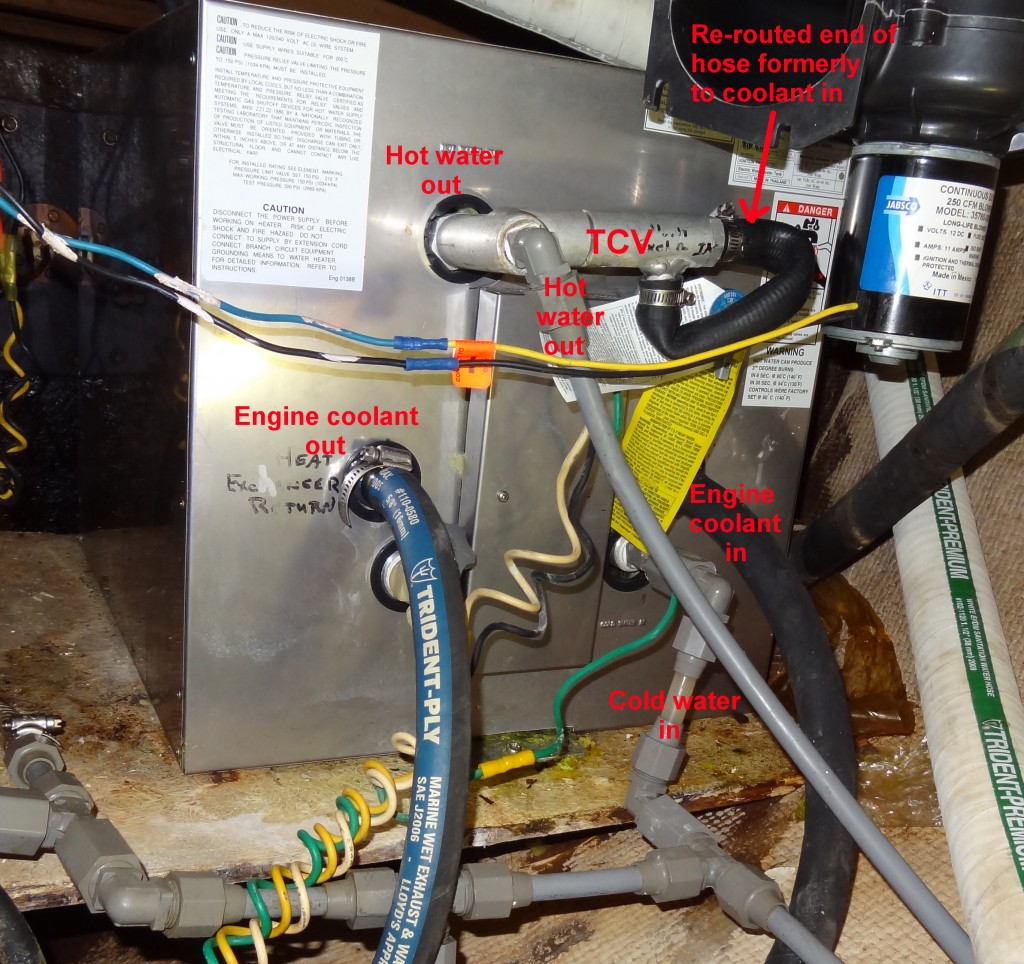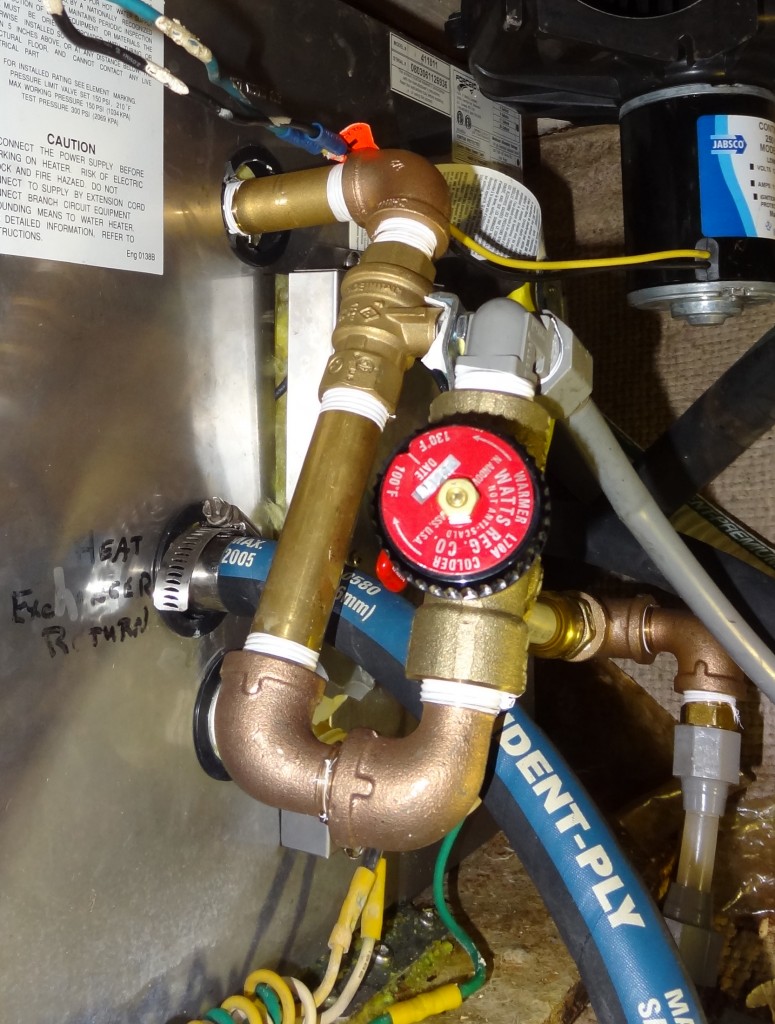TCV Replacement on Force 10 Hot Water Heater
The cooling system on our Ford-Lehman 135 began losing coolant at a very slow rate about a year ago, and try as I might I couldn’t locate the source of the leak. I added a adapter and short section of new hose to the line going to the overflow tank in order to provide the correct size of hose at the fitting at each end, I changed out the exhaust riser, and was contemplating a new head gasket as the amount lost every run kept slowly increasing. By the time we were well along the Rideau Canal in Canada this past summer when I was adding about a cup of antifreeze/water mix every six hours’ run, something had to be done. I received several glowing recommendations for a boat yard in Mechanicsville, Ontario, and made arrangements to have their mechanic look into the problem.
The boat yard mechanic and I found the problem in about 20 minutes: the Temperature Control Valve (TCV) on Sanderling’s Force 10 water heater had failed after only four years and needed replacement, leaking a stream of coolant while the engine was running and coolant was circulating to the heater! Since Force 10 is a Canadian company, the yard called the local Force 10 agent in Ottawa only to be told that replacement valves were no longer made because there were so many failures; they offered no alternative. The same information was obtained from the main office in British Columbia. The only solution was to bypass the valve and we could be on our way – just be very careful when opening a hot water tap after a day underway because the water would be extremely hot and could cause burns!
 Photo 1 shows the plumbing to and from the water heater after bypassing the TCV. The TCV itself is labeled as such. The looped black hose on the right side of the valve had been rerouted and the incoming coolant line plumbed directly into the heater.
Photo 1 shows the plumbing to and from the water heater after bypassing the TCV. The TCV itself is labeled as such. The looped black hose on the right side of the valve had been rerouted and the incoming coolant line plumbed directly into the heater.
Upon completing our cruise in mid-October I started looking into another way of tempering the extremely hot water in the heater that can result from long runs. Force 10 recommended installing a Watts brand (there are other brands available) tempering valve which adds cold water to the hot water exiting the heater based on an adjustable control valve. I found it online in both threaded and unthreaded versions, each version with temperature ranges from 100F-130F, and 120F-160F, in 3/4” and 1/2” sizes. A plumber friend suggested that the 100F-130F unit was best for domestic hot water, so that is what I purchased. You can see the assortment here: http://tinyurl.com/8xsl3np at one of the suppliers.
The most fun was yet to come, however. Fitting the valve and the lines proved to be a challenge. The manufacturer recommends that the valve be placed at least 8” from the hot water tank, and there were existing water lines that I didn’t want to move unless absolutely necessary. After drawing it all out with the required distance, ball valves that I wanted in order to facilitate future repairs (if necessary) and ensuring that it would go together and come apart without having to move the water heater itself, I went to work with the initial supplies of brass fittings from a hardware store. Three trips later, it all went together nicely and no modifications of existing water lines were required. I wasn’t able to install two additional ball valves due to space/distance limitations.
Photos 2 and 3 show the new valve in place with the convoluted brass plumbing.
Anyone with a Force 10 Water Heater should inspect the unit to determine if a TCV is in place; it was an optional add-on that was best left off due to the design defect. If it is used, you should be prepared to replace the TCV with a different valve, or at the very least be prepared to reroute the incoming coolant line and bypass the TCV when the valve fails.


